An organized effort to develop, renovate, refurbish, or destroy a building, structure, or infrastructure is known as a construction project. It is handled by a contractor or a project manager. For a construction project to be executed, a construction schedule should be created to help organize timelines for tasks and events to be carried out. It also eases the project manager’s ability to track resources and use the budget.
The purpose of a construction schedule is to guide the execution of the project. It helps the project manager, who is about to execute the construction plan, by breaking down the project into detailed activities that must be performed. It also acts as a management reporting tool and an implementation tool that helps get the necessary tasks done on time. It allows the project manager to create a realistic, achievable timetable for completing the work.
The timetable takes into account real-world limitations and constraints, preparing the team for any future issues. The schedule also enables the project managers to evaluate changes and their impact on the time and resources used throughout the project’s life cycle. It also eases the project manager’s ability to focus on the project’s needs, such as how much labor, money, and equipment are required. A project manager must understand the various types of construction scheduling methods that can be used, how the schedule is created, and the benefits of each.
This article is written to assist project managers or contractors who want to create a construction schedule by providing detailed instructions on how to do so. Also, we will provide free templates that you can customize according to your requirements and use multiple times.
Free Customizable Templates
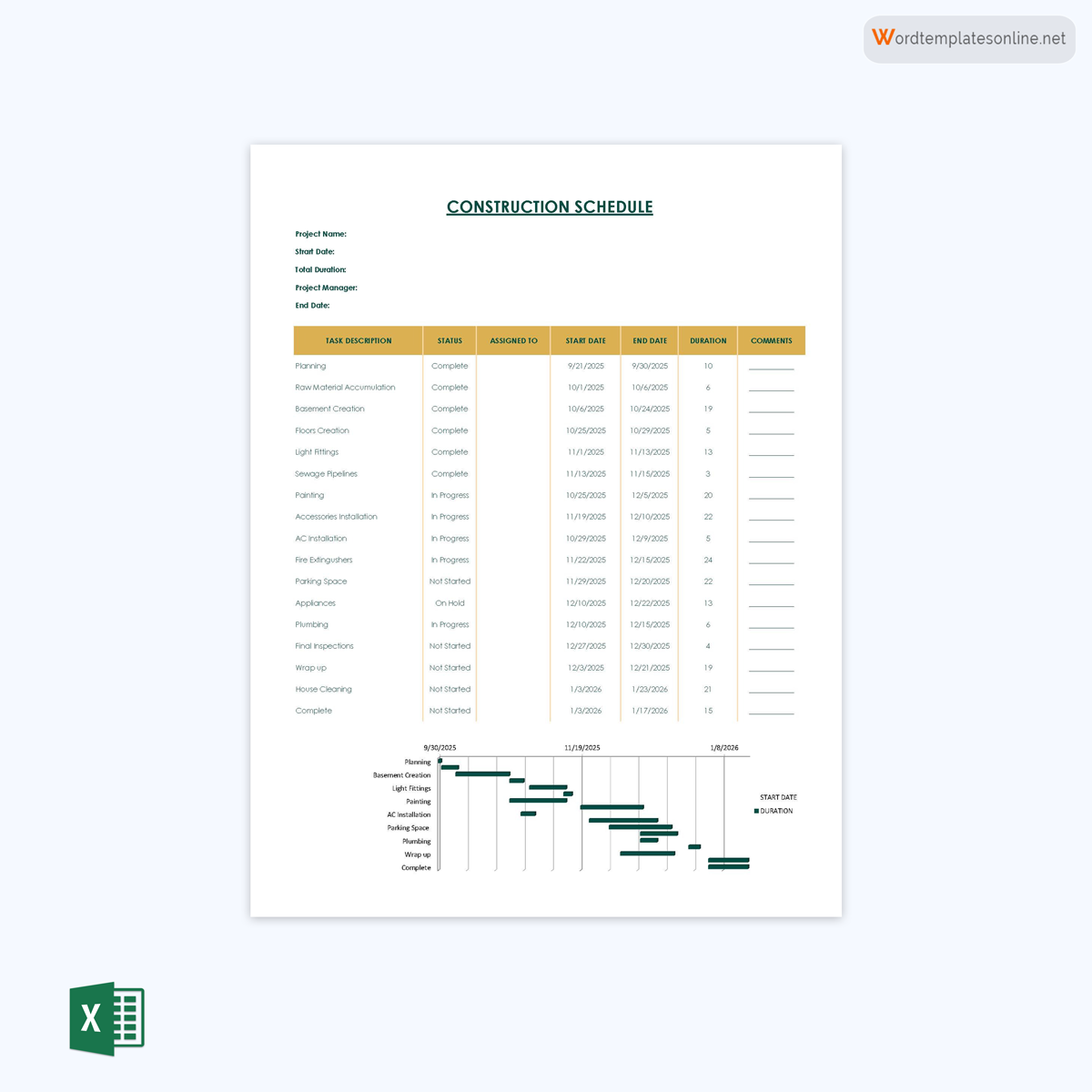
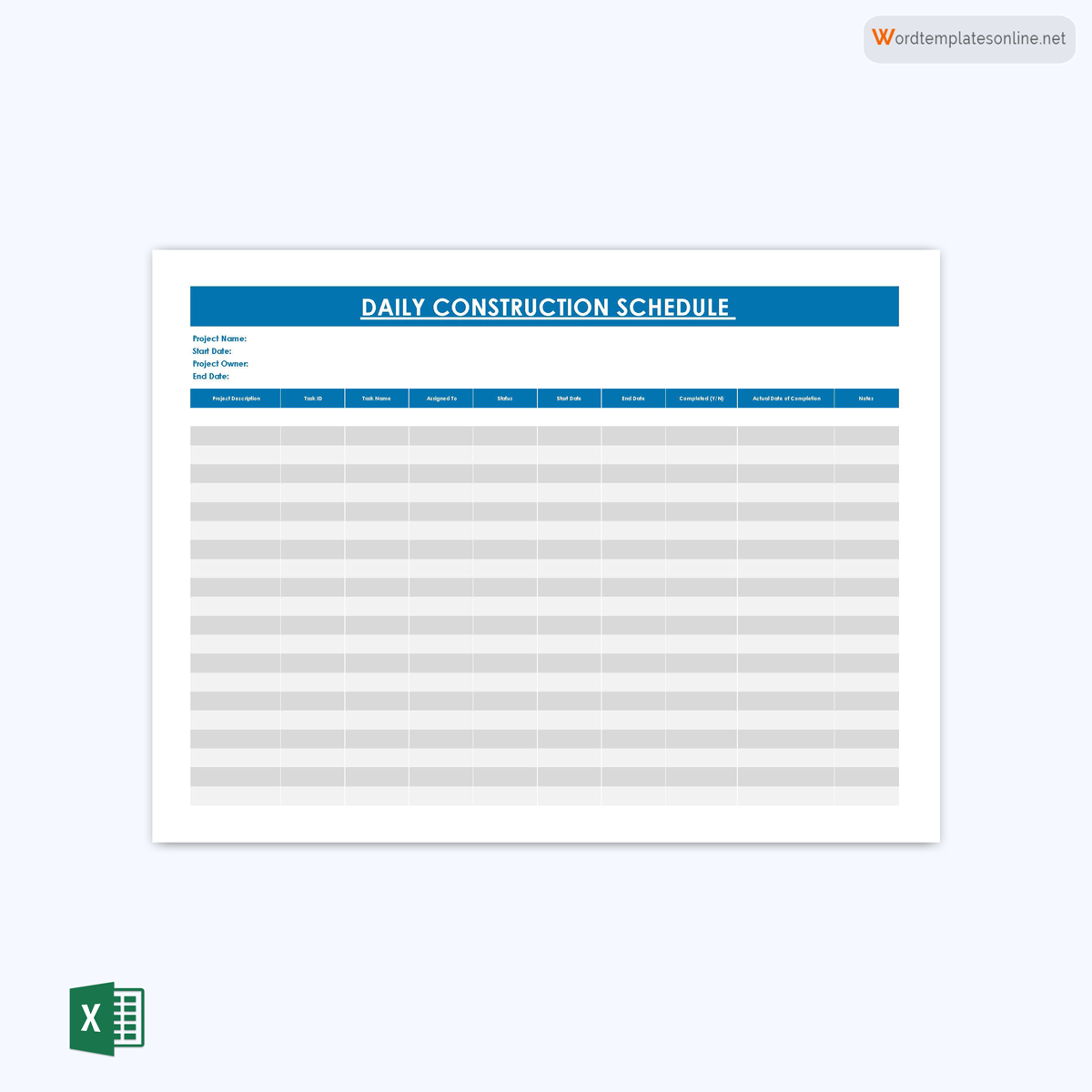
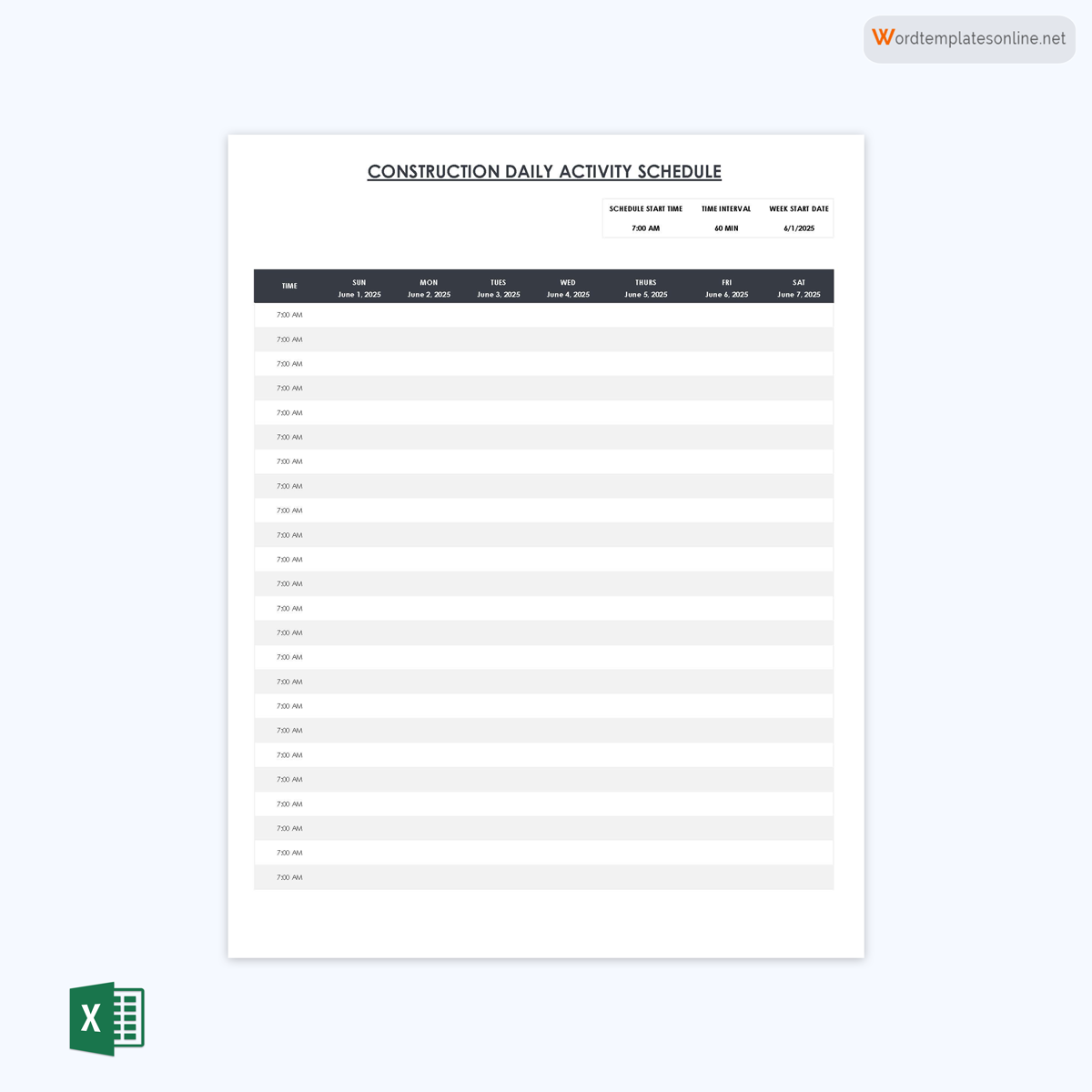
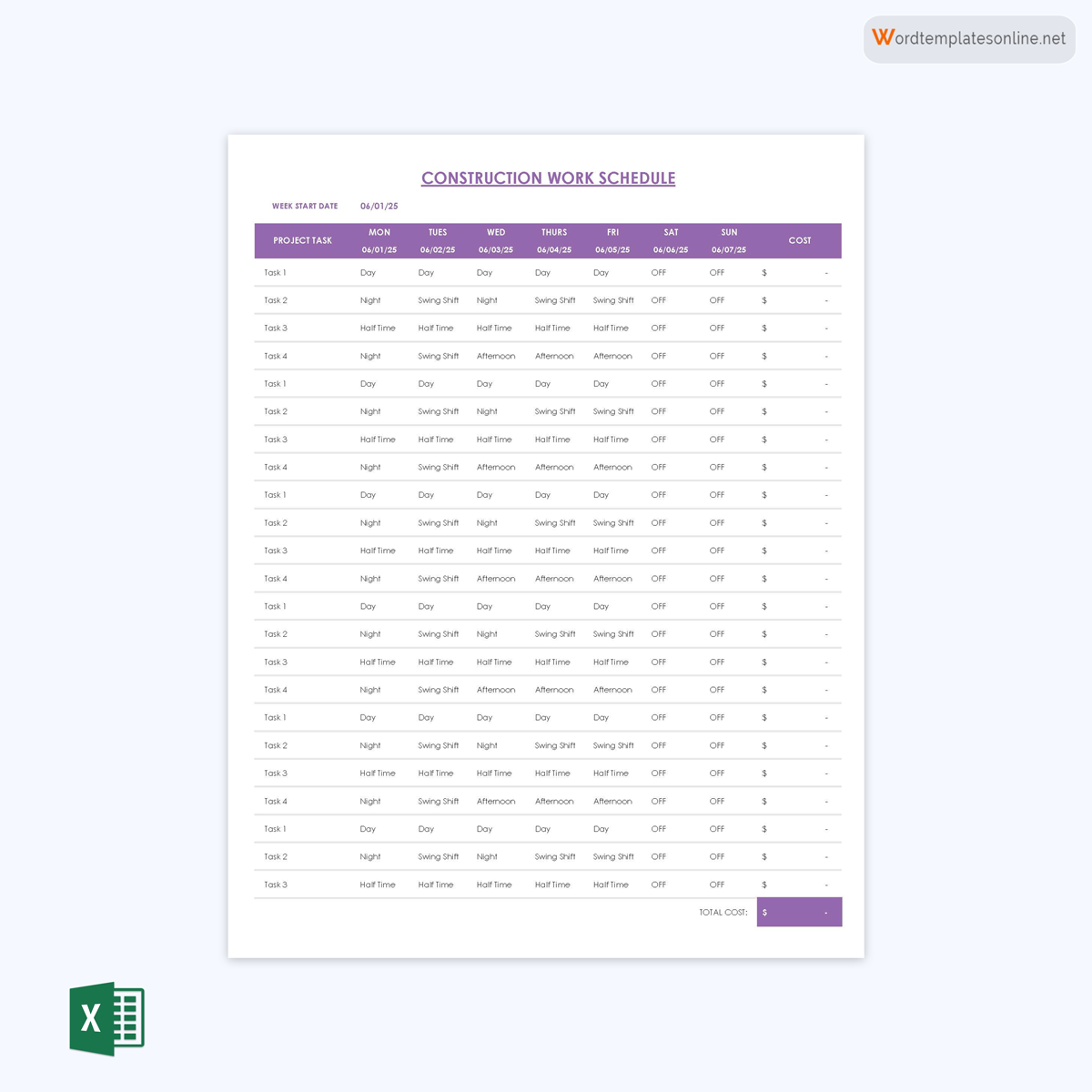
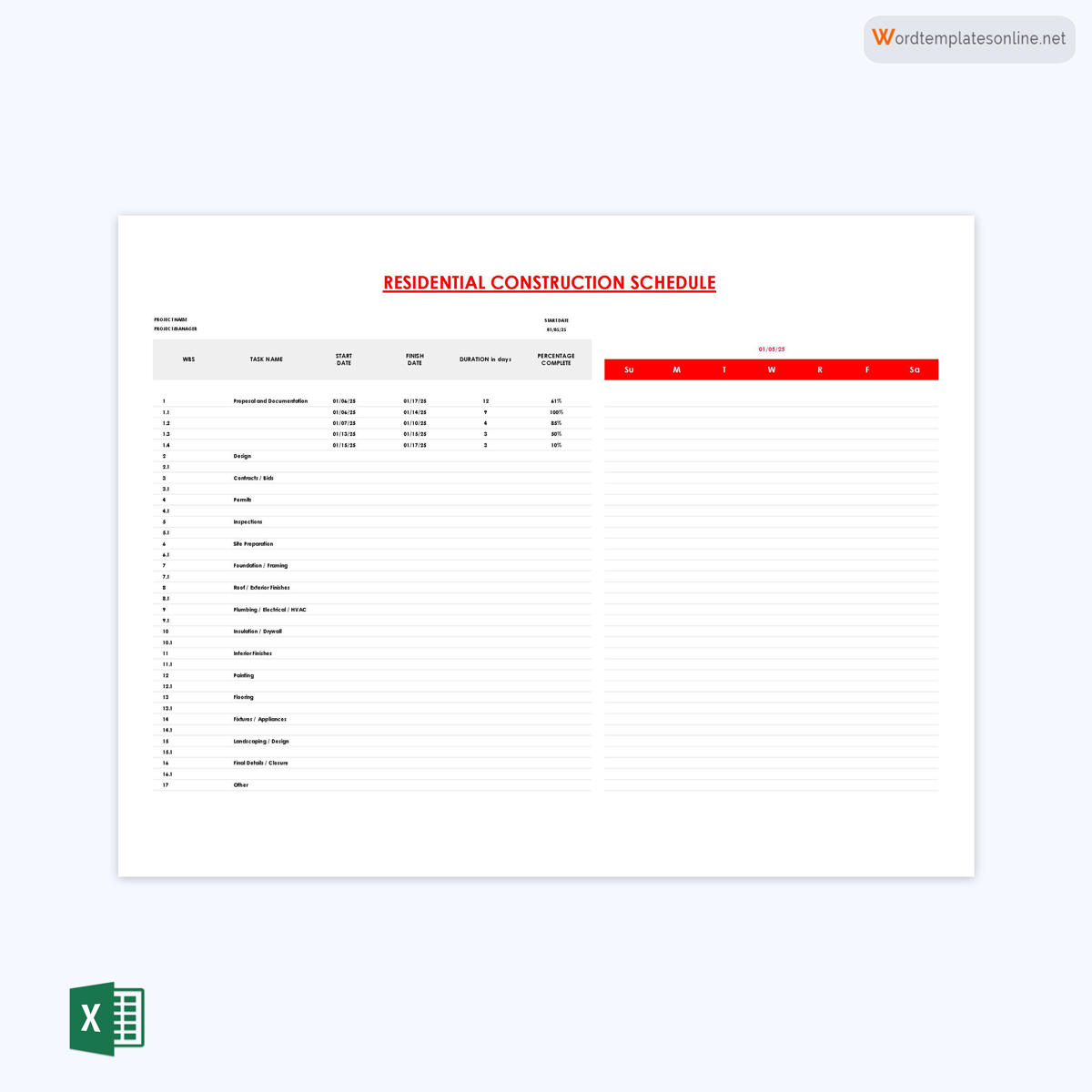
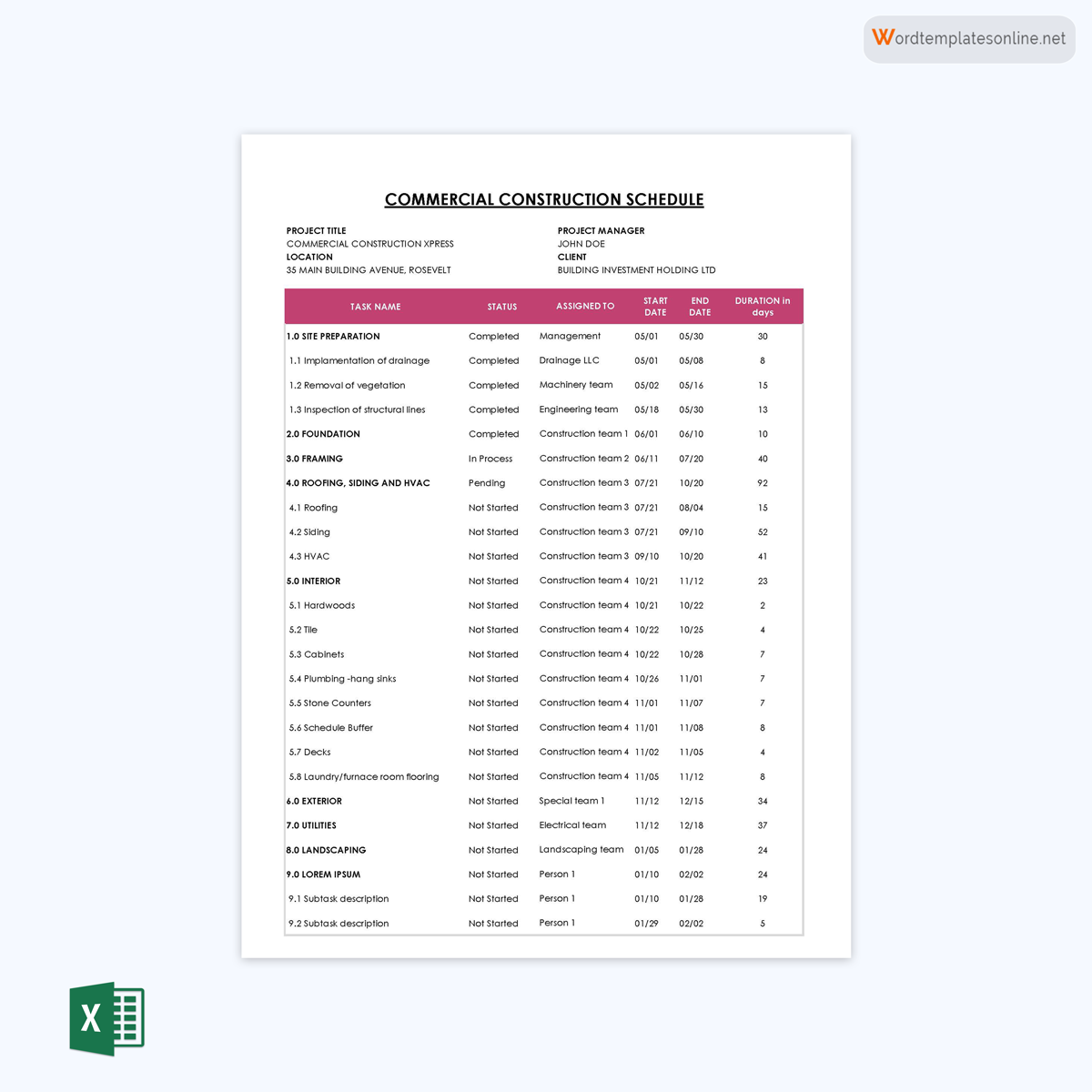
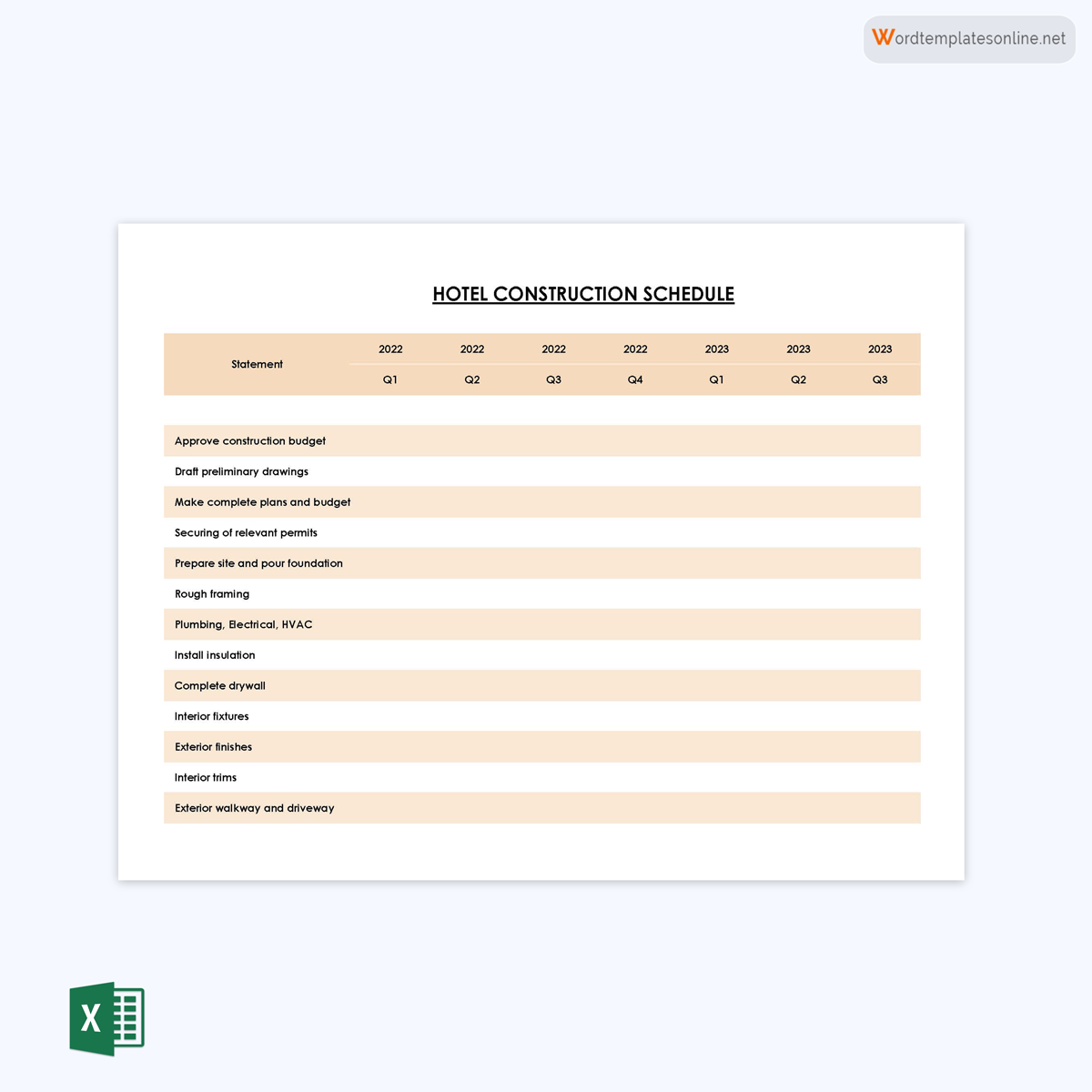
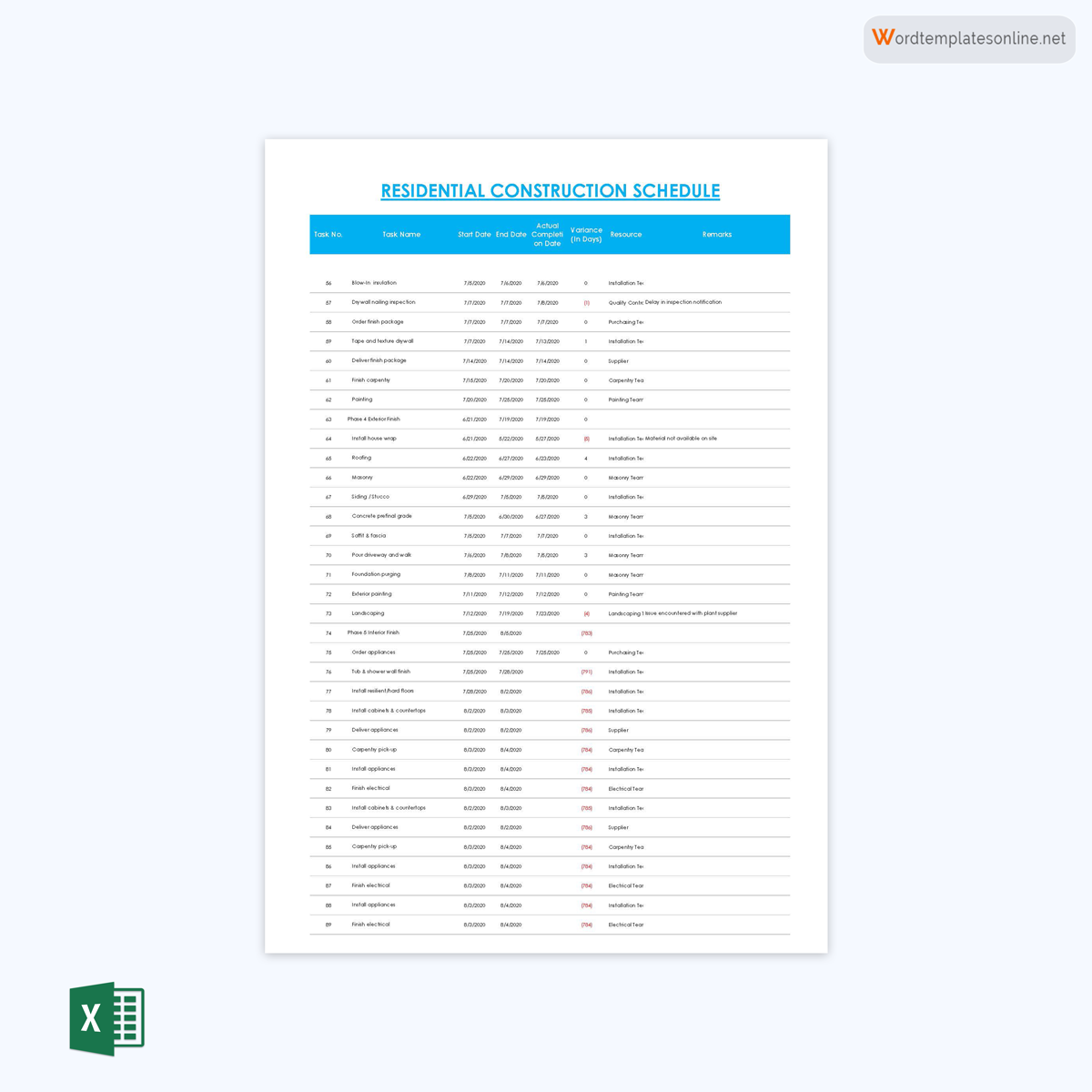
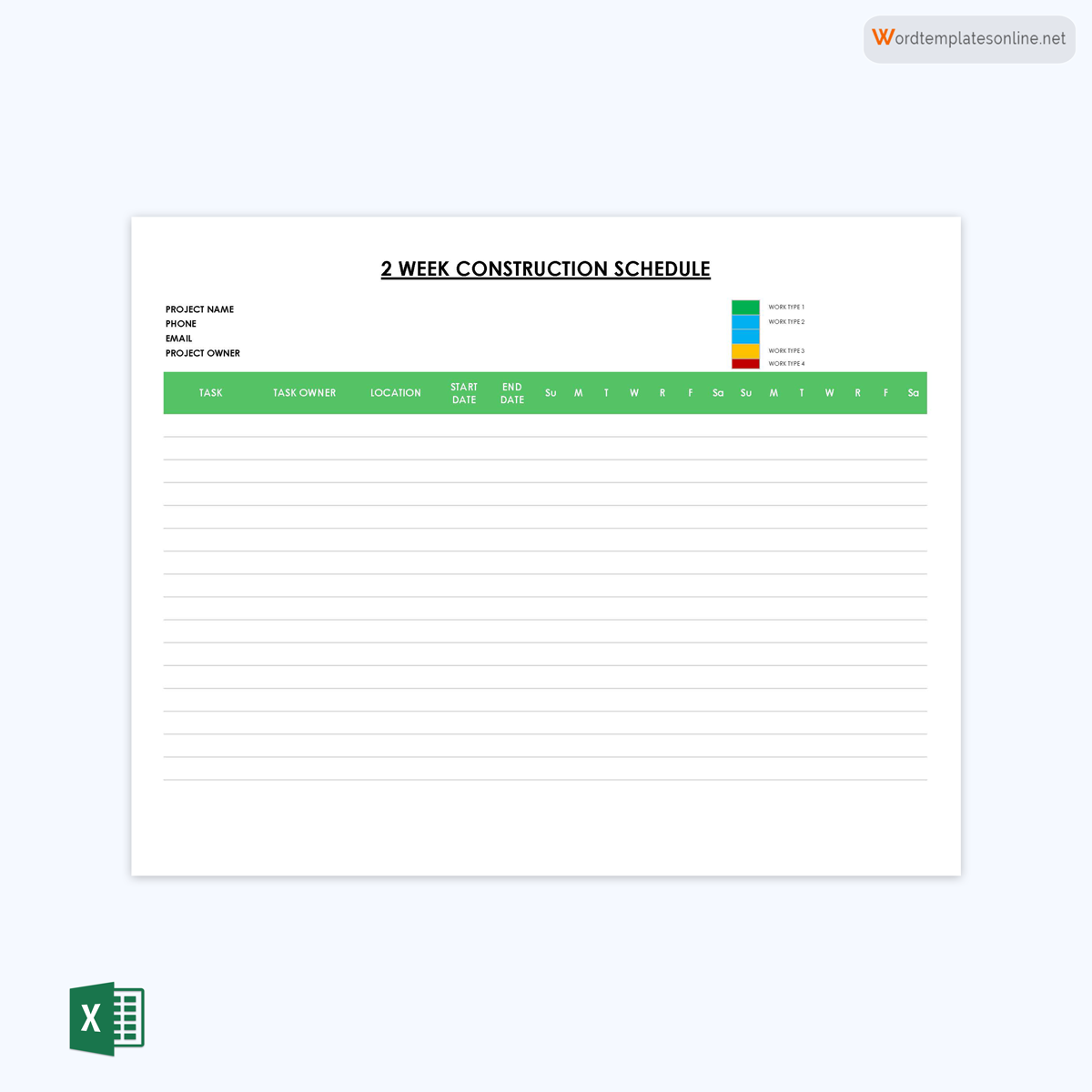
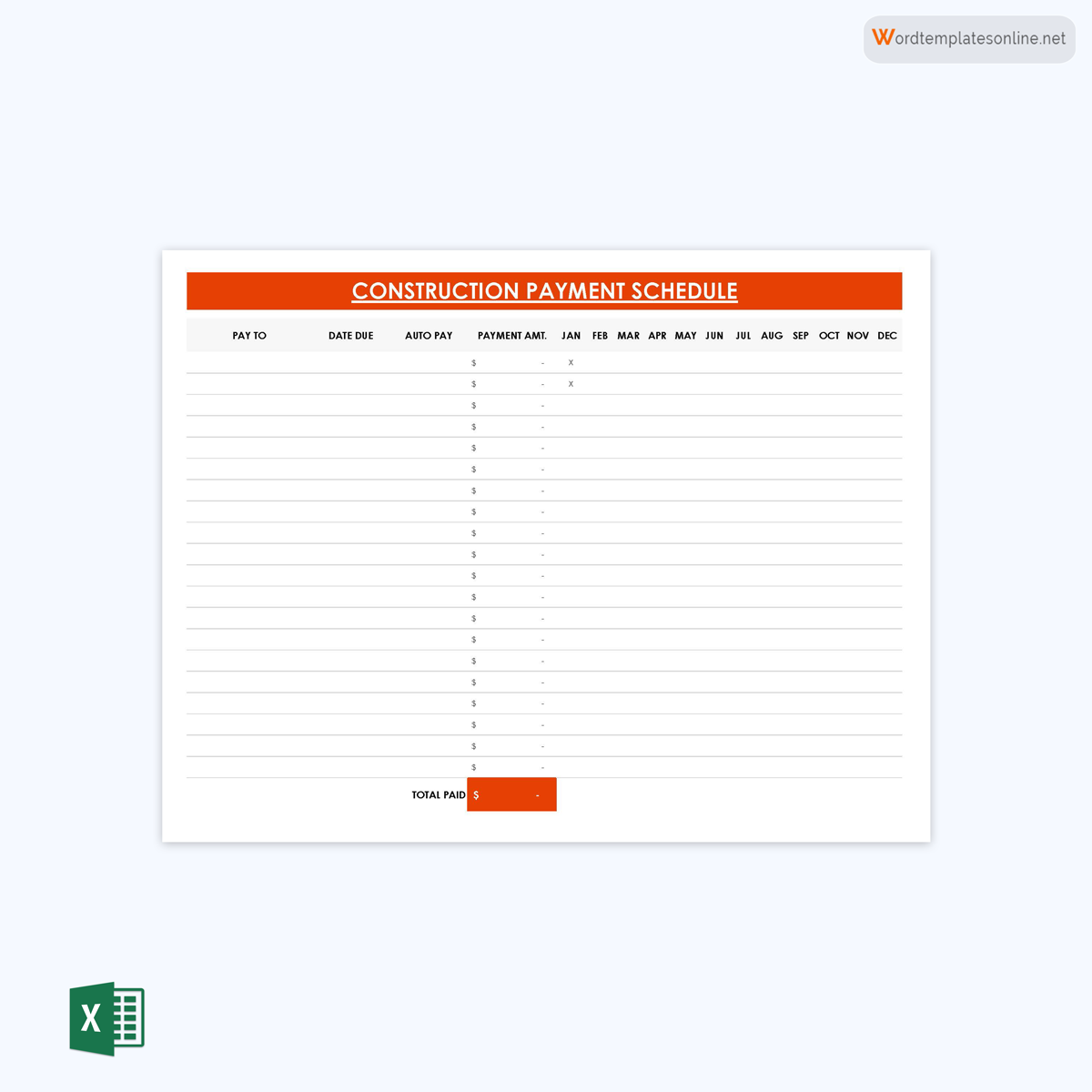
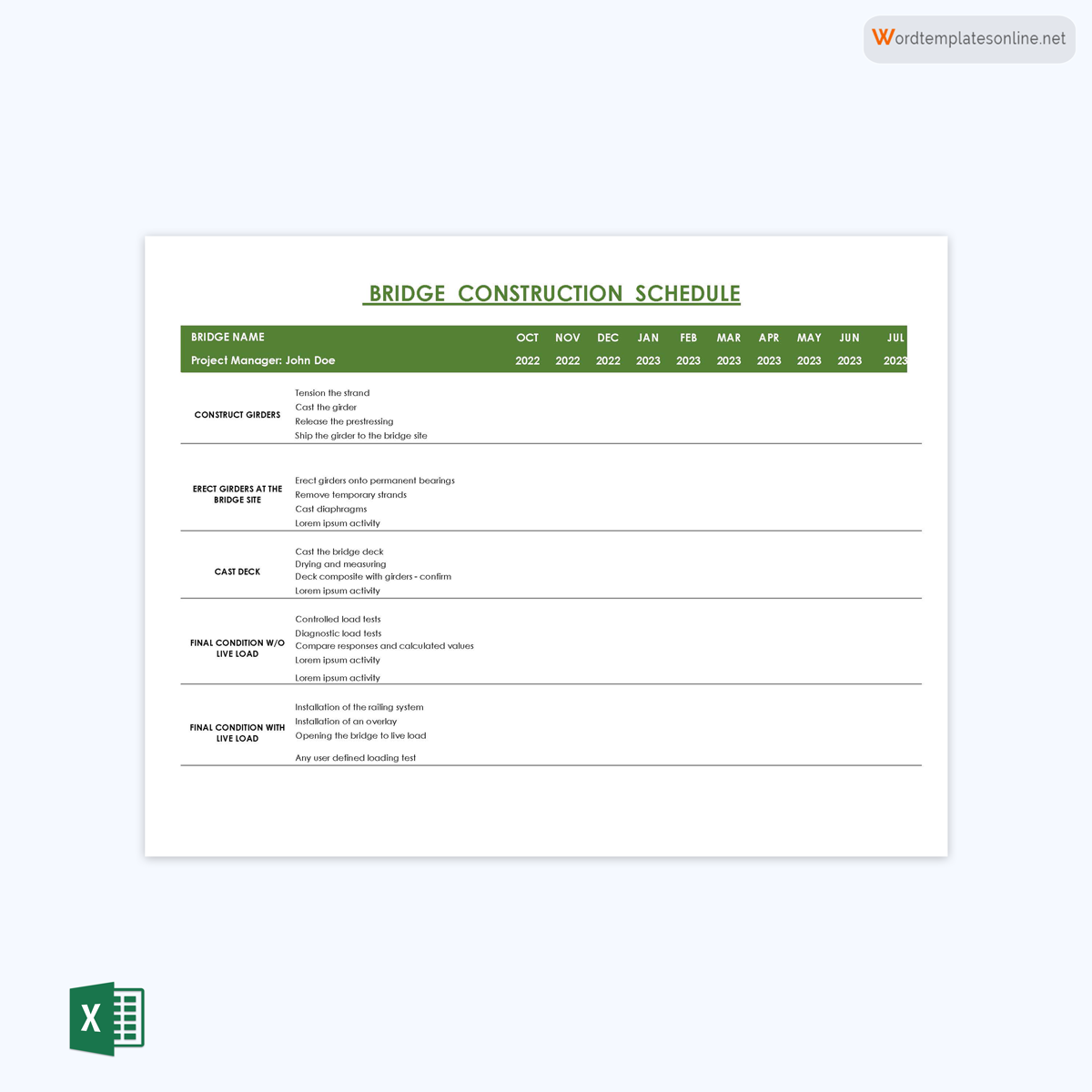
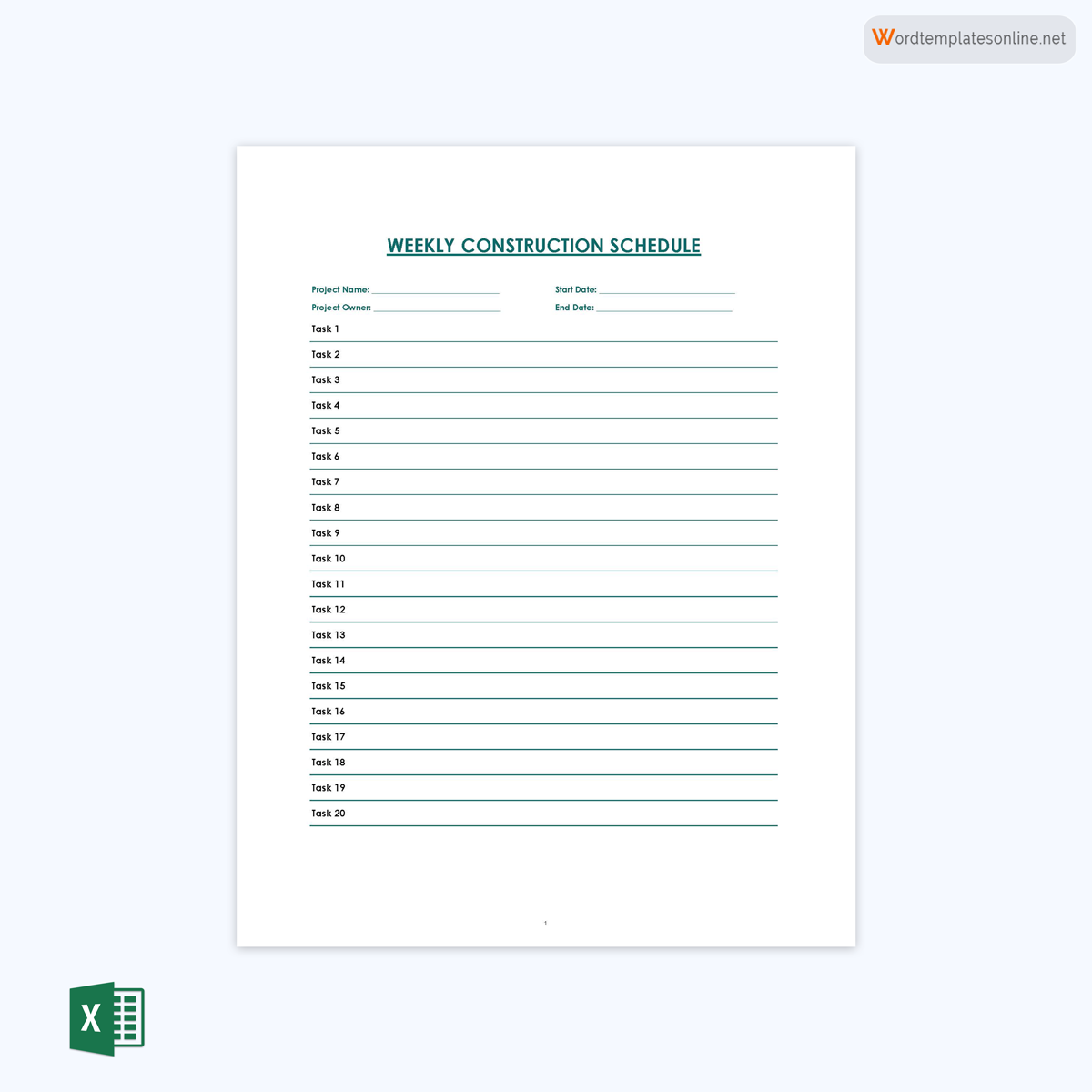
Construction Scheduling Methods
You can use one of seven different construction scheduling methods. Understanding them will ease your ability to create a schedule. It will also determine which method best suits the construction project.
The methods include the following:
Line of balance
The line of balance is a scheduling method used for projects that contain repetitive work activities like building roads, skyscapes, and pipelines. It collects, measures, and displays information about the time, cost, and work required to complete the project. This information is presented against the construction project plan. The line of balance method makes it easy to plan for resources as the work is repetitive.
Quantitative scheduling
Quantitative scheduling, or Q scheduling, is a construction schedule method that uses bar charts to enable the project manager to identify the quantity of materials required at different locations and times. The project manager can clearly see the type of material required at various times and locations. It is the only construction scheduling method that ties job sequences and costs together.
Program evaluation and review technique (PERT)
The program evaluation and review method creates a visual representation of key events and their associated dependencies to aid in the creation of a project road map. It enables you to better plan for tasks and uncertainties. It also helps facilitate better team coordination.
Resource-oriented scheduling method
Resource-oriented scheduling centers around the available project resources. It is used in construction projects that have limited resources or require unique resources. It assists in coordinating how the fewest resources are distributed to multiple parties in need.
Gantt charts
Gantt charts are a popular scheduling method that displays project tasks or activities against time using bar charts. It demonstrates how one task is dependent on another to ensure that the project is completed on time. You can use it to help estimate the duration of the project and crucial paths that can be taken during construction.
Last planner system (LPS)
The last planner system is used to improve workflow while adhering to a strict project deadline. Therefore, the deadline is at the center of the schedule. It is more of a managerial approach to the management of the construction project. It brings the team together to help encourage the timely completion of tasks.
Critical path method
The critical path method identifies tasks, resources, and the time required to complete a project-related millstone. It is the most widely used approach. It is used in large and complex construction projects. It enables you to calculate how much time and resources are needed to ensure the completion of each activity.
Developing a Construction Schedule Step-by-Step
The project manager and contractor must have a thorough understanding of the process of developing an efficient schedule. A well-drafted schedule can help shorten the construction period. It can also help reduce the costs associated with project execution.
The following is a guide on how to develop a construction schedule:
Step 1: Gather information on the project
You should begin by gathering information about the project, the resources and stakeholders involved, and the team in charge of its execution. Next, all the subcontractors should be contacted to determine how much time is needed to get the materials needed and how long it will take to complete the project. The local code office should also be contacted to learn more about the various requirements and inspections that must be performed in that particular construction area.
The information highlighted will help ensure that the project is compliant with local laws. The bank should also be contacted to find out when they will release the funds needed to complete the project. The talks held with the banks before and after the schedule is created will help give them a clear picture of when the money is needed and how the money will be disbursed.
Step 2: Choose an appropriate template
Secondly, you should select the best template for the project. Using a template will help you avoid having to create the schedule all by yourself. Its premade structure gives the construction schedule a consistent and uniform appearance. This eases the team’s ability to find information. An already formatted template is also simpler to use because it enables you to focus on the necessary information rather than the schedule’s format.
Step 3: Identify all labor and key stakeholders
Thirdly, a list of all labor and key stakeholders involved in the project should be created. The project manager should then establish each of their roles and responsibilities. It will assist in ensuring that all parties involved, including the project owner, employees, and subcontractors, have access to the most recent information.
Step 4: Collect and prioritize tasks
Next, you should make a list and describe the tasks that must be carried out. The work breakdown structure (WBS) can be used to help determine the size, scope, and dependencies of the project. It enables you to break down the key deliverable into smaller, manageable components. The use of the WBS will enable the team to execute the project successfully. Prioritizing the tasks will guide you on where to start when executing the project.
Step 5: Identify the duration of the task
It would be best to estimate a timeline for each task identified. The estimated timeline should be realistic. Factors like the weather, holidays and employee sick days may also impact the timeline. The task duration plays a vital role in determining when resources will be made available to the team. It will also impact the cost of each phase of the construction. Determining the duration will ease your ability to monitor progress.
Step 6: Review your schedule and assign responsibilities
In order to make sure that nothing is missing, you should review the schedule again. A meeting with those involved in the project’s execution should be set up to obtain feedback on the schedule. Adjustments can be made based on the feedback you receive. Next, tasks should be assigned before work on the project begins. It ensures that those involved in project execution understand what needs to be done and by whom. It helps keep stakeholders and workers accountable for their roles and responsibilities.
Step 7: Execute
Once the schedule is set and tasks are allocated, the project should be executed. It is critical that you constantly monitor the project’s progress. The milestones should also be tracked to see if they are being met.
Step 8: Review the schedule
You should also review the schedule to keep up with the changes. You can make sure the project stays on track by regularly updating the schedule. It will also help reduce any risks posed by the issues that can arise during the project’s execution. Schedule reviews should be conducted periodically.
Step 9: Assumptions or constraints
Finally, limitations or presumptions made while creating the schedule should be described. They may include external or internal changes, unforeseen challenges, or a lack of resources. The team and stakeholders can better understand your scheduling strategy by learning about these constraints. Furthermore, being aware of the limitations will aid in preparing the team for any potential problems.
Advantages of Creating a Construction Schedule
Your ability to manage resources, especially for projects where they are scarce, is aided by the creation of the schedule. You can easily plan how workers will have access to the resources they need to complete the project by using the schedule.
It serves as a roadmap for the team, outlining what is expected of each member and when. A construction schedule also enables the proper allocation of resources like labor, equipment, and materials. By anticipating the estimated budget, you can use the schedule to keep the project within its allotted spending limit.
It also improves your ability to track changes that might impact the deadline for completion. It enables control of the quality of the final result by ensuring that suitable materials and equipment are used throughout the project. It also enables the evaluation of additional work execution strategies.
It ensures that everyone on the team is equally involved and informed about the project. Finally, it enables you to identify future challenges that the project may face.
Final Thoughts
A construction schedule is a key tool used to guide and manage a construction project. It is critical in ensuring that the project is completed on time and within budget. Using a schedule for a construction project has several advantages, including the ability to allocate resources and control the quality of work, among others.
You can use a variety of scheduling approaches depending on the size and complexity of the project, as well as the time and resources available. When creating the schedule, you should consider using a template to streamline the process and save time and effort.




